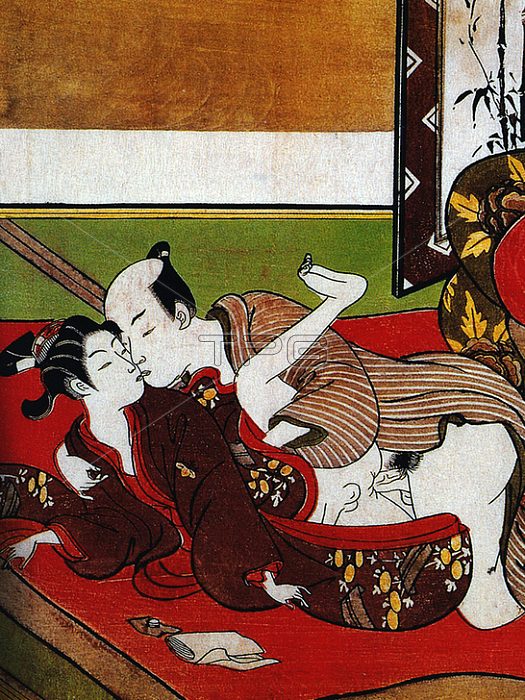
Shunga (??) is a Japanese term for erotic art. Most shunga are a type of ukiyo-e; usually executed in woodblock print format. While rare; there are extant erotic painted handscrolls which predate the Ukiyo-e movement. Translated literally; the Japanese word shunga means picture of spring; 'spring' is a common euphemism for sex.
The ukiyo-e movement as a whole sought to express an idealisation of contemporary urban life and appeal to the new chonin class. Following the aesthetics of everyday life; Edo period shunga varied widely in its depictions of sexuality. As a subset of ukiyo-e it was enjoyed by all social groups in the Edo period; despite being out of favour with the shogunate.
Suzuki Harunobu (?? ??; 1724 - July 7; 1770) was a Japanese woodblock print artist; one of the most famous in the Ukiyo-e style. He was an innovator; the first to produce full-color prints (nishiki-e) in 1765; rendering obsolete the former modes of two- and three-color prints.
Harunobu used many special techniques; and depicted a wide variety of subjects; from classical poems to contemporary beauties (bijin; bijin-ga). Like many artists of his day; Harunobu also produced a number of shunga; or erotic images.
| px | px | dpi | = | cm | x | cm | = | MB |
Details
Creative#:
TOP20150402
Source:
達志影像
Authorization Type:
RM
Release Information:
須由TPG 完整授權
Model Release:
No
Property Release:
No
Right to Privacy:
No
Same folder images:

 Loading
Loading